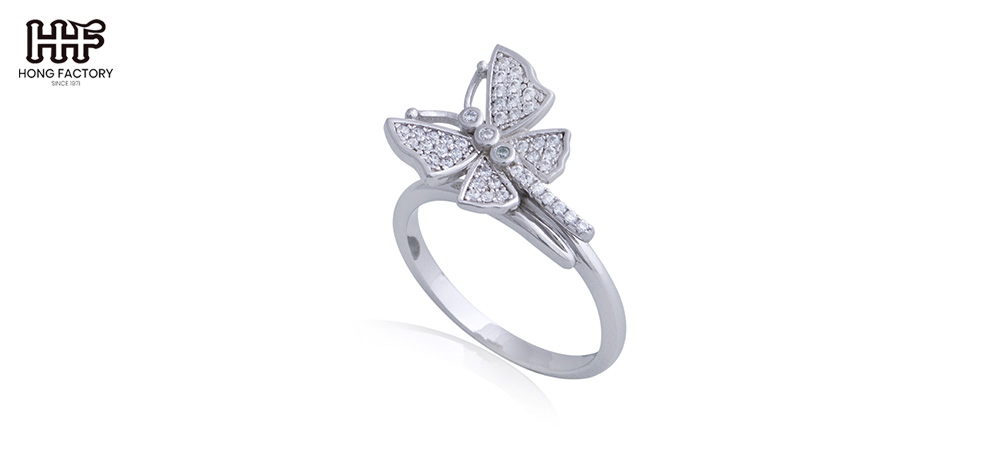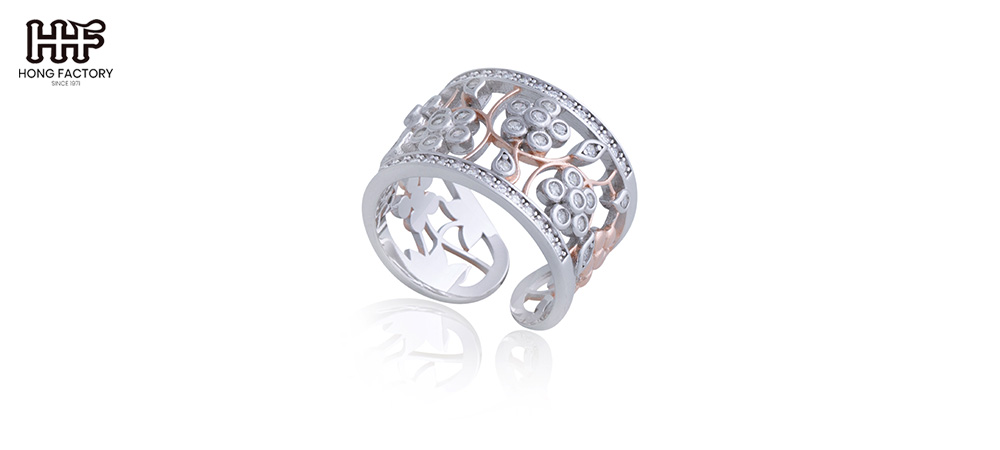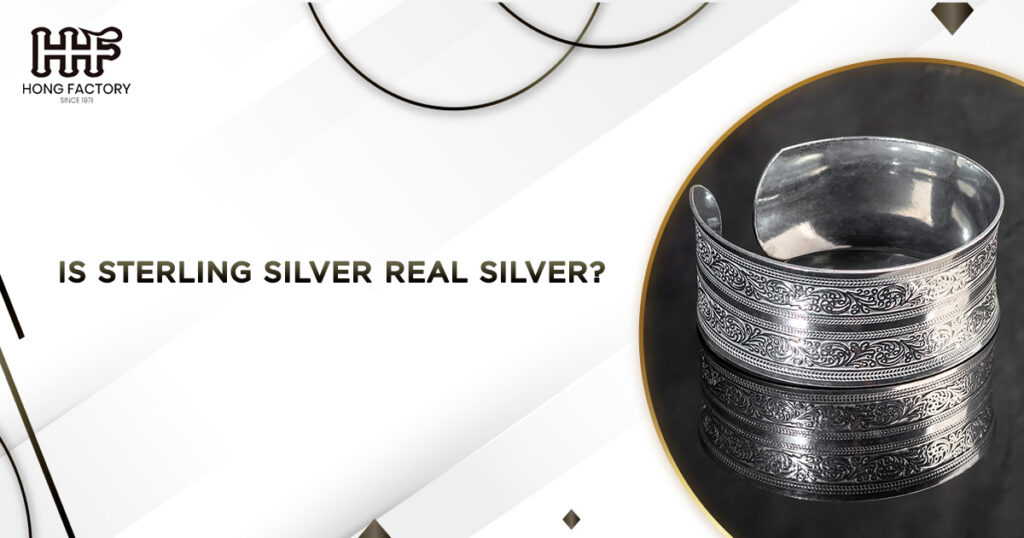When buying jewelry or silverware, you may encounter terms like sterling silver and wonder, is sterling silver real silver? This question is common among buyers who want to ensure they are getting quality items. The answer is yes—sterling silver is real silver, though it’s not pure silver. In this article, we’ll explore what sterling silver is, how it compares to pure silver, and why it’s a popular choice in jewelry and other items.
What Is Sterling Silver?
To answer the question, is sterling silver real silver? it’s helpful to understand what defines sterling silver. Sterling silver is an alloy composed of 92.5% pure silver and 7.5% of other metals, commonly copper. The addition of other metals strengthens the silver, making it durable and practical for everyday items like jewelry, cutlery, and decorative pieces.
Composition of Sterling Silver
- 92.5% Silver : This high percentage of silver means that sterling silver retains most of the properties associated with pure silver, including its appearance and luster.
- 7.5% Alloy (Usually Copper) : Copper is typically added to strengthen the alloy. Pure silver is soft and malleable, so adding copper helps prevent scratching, denting, and bending, making it suitable for items that require durability.
Why 92.5% Silver?
The 92.5% purity standard isn’t arbitrary; it’s an international standard in silver quality. Items labeled as sterling meet this benchmark, ensuring buyers know they’re getting high-quality silver with enhanced durability. You may also see sterling silver marked as 925, a numerical shorthand indicating the percentage of silver in the alloy.

How Does Sterling Silver Compare to Pure Silver?
When wondering is sterling silver real silver? it’s natural to wonder how it compares to pure silver. Here are some key differences
- Purity
Pure silver, or fine silver, is 99.9% silver, giving it a high shine and a soft texture. While this is the purest form, it’s also very delicate, which is why pure silver is rarely used in jewelry and functional items like utensils or decor. In contrast, sterling silver’s 92.5% composition adds just enough strength to make it practical for everyday use while retaining its aesthetic appeal.
- Durability
The 7.5% alloy in sterling silver makes it much harder than pure silver, making it scratch-resistant and less likely to dent. This durability is why sterling silver is preferred for items that need to withstand regular wear and tear.
- Appearance
Sterling silver and pure silver are nearly identical to the untrained eye. Both have a beautiful, shiny appearance; however, sterling silver is prone to tarnishing over time due to its copper content, while pure silver does not tarnish as easily. Tarnish occurs when silver reacts with sulfur in the air, forming a dark layer on the surface. Regular cleaning can restore sterling silver to its original shine.
Why Is Sterling Silver Popular in Jewelry?
Sterling silver’s mix of affordability, beauty, and durability makes it a top choice for jewelry. Many people favor sterling silver for its timeless appeal and versatility, allowing it to be crafted into rings, necklaces, bracelets, earrings, and more.
- Affordability
Since sterling silver contains less silver than pure silver, it is more affordable while still providing the look and feel of fine silver. This price point makes sterling silver accessible to a wider range of consumers, especially for those who want quality silver without the premium cost of pure silver.
- Hypoallergenic Properties
Although sterling silver contains copper, it is generally hypoallergenic, meaning it’s safe for most people with sensitive skin. Sterling silver is unlikely to cause allergic reactions, making it a safe option for earrings and rings, where metals come in close contact with the skin.
- Versatility in Design
Sterling silver is more workable than many other metals, allowing jewelers to create intricate designs that would be challenging with harder metals. From minimalist pieces to ornate designs, sterling silver is perfect for achieving a wide variety of styles.
Is Sterling Silver Considered Real Silver?
To directly address the question, is sterling silver real silver? the answer is yes, sterling silver is considered real silver. Despite its alloyed composition, sterling silver maintains all the essential qualities that define silver as a precious metal. The added metals don’t diminish its value; rather, they enhance its practical uses by making it more durable.
- Real Silver vs. Fake Silver
It’s essential to differentiate sterling silver from items that are only silver-plated. Silver-plated items have a thin layer of real silver coating over a base metal, which can wear off over time. In contrast, sterling silver is solid throughout, giving it lasting value and ensuring it doesn’t lose its silver content, even if it tarnishes.
- Stamps and Hallmarks
One way to identify genuine sterling silver is by looking for hallmarks or stamps. Authentic sterling silver typically carries a 925 stamp or Sterling marking, indicating its 92.5% silver content. These marks provide assurance of authenticity, so buyers can confidently know they’re purchasing real silver.

Pros and Cons of Sterling Silver
Understanding the benefits and potential drawbacks of sterling silver can help you decide if it’s the right choice for your jewelry or household items.
- Pros
– Affordable : Less expensive than pure silver, while offering a similar aesthetic.
– Durable : Strong enough for everyday use, thanks to its alloyed composition.
– Hypoallergenic : Suitable for most people with sensitive skin.
– Versatile : Easy to work with, allowing for intricate and diverse designs.
- Cons
– Tarnishing : Prone to tarnish, requiring regular maintenance to maintain its shine.
– Softer Than Other Metals : Although harder than pure silver, sterling silver can still scratch if not handled carefully.
Alternatives to Sterling Silver
If you’re looking for alternatives to sterling silver, there are a few options to consider. Each has unique benefits, depending on your budget and design preferences.
- Argentium Silver
Argentium silver is an advanced silver alloy containing a small percentage of germanium, which helps reduce tarnish. Argentium silver is usually around 93.5% silver, slightly higher than sterling, making it even more durable and tarnish-resistant.
- Fine Silver
For those who want the purest silver available, fine silver (99.9% silver) is an option. While beautiful, fine silver’s softness limits its use in jewelry and other items subject to wear and tear.
- Silver-Plated
Silver-plated items are more affordable but do not contain much silver. A thin layer of silver is coated over a base metal, often leading to quicker wear. Silver-plated pieces are more prone to fading and may not be suitable for long-term use.
Conclusion
In summary, the answer to is sterling silver real silver? is a resounding yes. Sterling silver combines 92.5% pure silver with a small amount of alloy to create a durable, affordable, and versatile metal that’s perfect for jewelry and other everyday items. Whether you’re purchasing sterling silver for its beauty, affordability, or hypoallergenic qualities, this alloy provides a range of benefits without compromising on quality.

